Aikido: The Art of Harmony and Self-Defense

Welcome to the world of Aikido, where a martial arts discipline meets a harmonious philosophy to create a unique form of self-defense. Aikido has its roots in Japanese traditions and culture, from these philosophies, it promotes peace and harmony.
The key idea of Aikido is to turn an opponent’s attack against them. Aikido promotes the idea of using an attacker’s force or momentum to your own advantage. Techniques like joint locks and throws are often used in Aikido, and the key concept of the martial art is that a smaller person can defend against a larger opponent’s attack.
In this post, I will share my knowledge of Aikido with you and give you insight on how it can harness spiritual growth and physical ability. Let’s explore the art of Aikido!
Origins of Aikido: The Path to Harmony
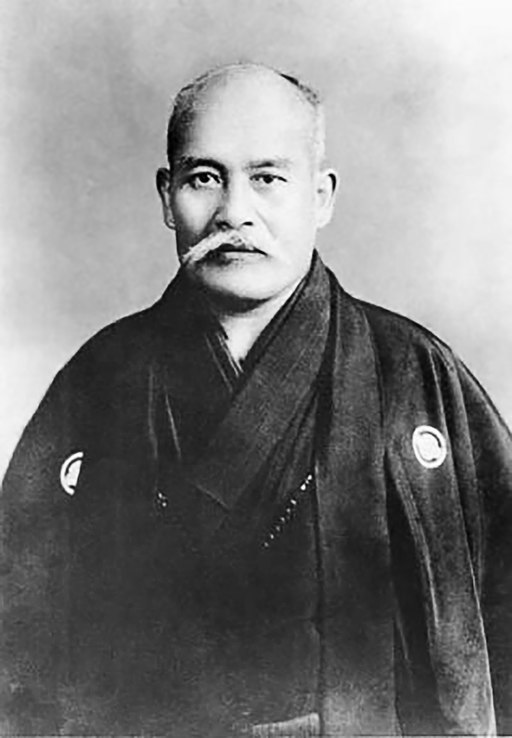
Aikido was founded by a Japanese martial artist named Morihei Ueshiba, a man known for being the grandmaster or “O sensei” of the martial art. Morihei Ueshiba was born on December 14, 1883, in Tanabe, Wakayama Prefecture, Japan. Growing up in a time of civil unrest, he was a physically weak child, which led him to pursue various physical disciplines to strengthen his body, including sumo and swimming. His father’s involvement in a political conflict exposed Ueshiba to violence at an early age, which shaped his desire for a peaceful resolution to conflict. Ueshiba served in the Russo-Japanese War, and it was this experience that motivated him to pursue the true nature of martial arts.
After the war, Ueshiba studied a variety of martial arts, including Jujutsu, Kenjutsu, and spear fighting. His martial arts journey took a significant turn when he met Takeda Sokaku, the founder of Daito-ryu Aiki-jujutsu, and became one of his most dedicated students. After years of training, Ueshiba became one of Sokaku’s best students. Once Ueshiba had learned Jujutsu, he was given permission by Takeda Sōkaku to teach the martial art.
The mastering of Japanese martial arts like Daito-ryu Aiki-jujutsu influenced many of the early techniques of Aikido. However, as Ueshiba got older and gained more knowledge, he adapted the techniques of Aikido, adding new throwing techniques and joint locking techniques.
Although Ueshiba’s martial arts knowledge grew, it was a series of spiritual awakenings that led him to envision a new martial art that would go beyond mere physical techniques. This began when he moved to Ayabe in 1920, where he encountered the spiritual leader Onisaburo Deguchi of the Omoto-kyo religion.
The teachings of the Omoto-kyo religion, emphasizing peace and universal harmony, had a great influence on Ueshiba. The blend of martial arts expertise and his new-found spiritual beliefs began to form the evolution of Aikido, making it a martial art that focuses on self-improvement and spiritual practices. The result of this blend of philosophy and self-defense techniques was a modern martial art that emphasized these principles through physical and mental training.
In 1927, Ueshiba made his most significant advancement in Aikido. He decided to move to Tokyo, where he went on to teach Aikido to important Japanese military personnel and prominent people. This is where Ueshiba really established Aikido and became known as the iconic master of the martial art. Tokyo, being the capital of Japan, had its reach in the international community, and Aikido soon began reaching foreign shores.
The Evolution of Aikido Techniques
Aikido’s technical foundation is rooted in the art of Daito-ryu Aiki Jujutsu. However, the evolution of Aikido techniques was not confined to this art alone. Morihei Ueshiba’s study of other Japanese martial arts like Tenjin Shin’yō-ryū, Gotōha Yagyū Shingan-ryū, and judo had a significant influence on Aikido’s development.
One of the most striking characteristics of Aikido techniques is the influence of swordsmanship. Many Aikido strikes showcase a similarity with cuts from a sword, a kind of cutting movement. This indicates its origins in techniques that are designed for armed combat. These influences were integral to the formation of Aikido’s unique set of practice techniques.
The Philosophy Behind Aikido
The philosophy of Aikido is a reflection of its founder’s beliefs, influenced by his encounter with the Ōmoto-kyō religion. This philosophy is based on principles of universal peace, reconciliation, and the unification of human beings. Aikido is more than just physical training; it is seen as a way to express Ueshiba’s ideology of universal peace and harmony.
This philosophy sets Aikido apart from other martial arts. Unlike other martial arts that prioritize aggression or retaliation, Aikido places emphasis on harmonizing with an attacker’s movements to neutralize their aggression. This unique philosophy is deeply rooted in Morihei Ueshiba’s teachings, leading to his common reference as O Sensei. I believe this peaceful philosophy is yet another reason why O Sensei’s Aikido continues to inspire and influence practitioners around the world.
The Unique Aspects of Aikido Training

Training in Aikido strikes a balance between physical and mental aspects. This highlights the importance of cooperative practice and sensible use of the body. It also introduces the unique concept of ‘aiki’, a Japanese term that means to relax the muscles and use minimal energy. Aiki is about using a minimal amount of force while relaxing the body. This approach differentiates Aikido from other martial arts by providing a training experience that combines physical fitness with mental conditioning. The ability to control your body in a relaxed way while also being able to defend against attacks is a unique characteristic of Aikido.
The Roles of Uke and Tori
The effectiveness of Aikido training heavily relies on the roles of Uke and Tori. Uke assumes the role of the partner who receives the technique, while Tori serves as the performer of the technique and responds to the attack. In simple terms, this means Uke is the attacker and Tori is the partner practicing Aikido self-defense techniques to defend against the attacks of Uke.
This interplay offers a distinct training experience. It allows Tori practitioners to gain insight into blending with and managing the attacking energy. On the other hand, Uke practitioners develop the ability to remain composed and adaptable in disadvantaged situations. This cooperative practice is a defining feature of Aikido training, contributing to the personal growth of both practitioners. Uke and Tori are interchangeable, and they are both needed to practice Aikido. This means a training session will have both Uke and Tori switching over, as each student will need to practice in each role.
Aikido and Self-Defense
The philosophy of Aikido bolsters its effectiveness as a tool for self-defense. Aikido’s aim is to enable individuals to effectively protect themselves from both armed and unarmed assailants. It teaches the redirection and neutralization of an assailant’s energy instead of engaging in direct confrontation.
Aikido techniques that are beneficial for self-defense include methods for redirecting and managing an opponent’s energy, such as irimi-nage (entering throw), kokyu-nage (breath throw), and kote-gaeshi (wrist twist). These techniques enable practitioners to defend against an assault and restrain the opponent without inflicting great harm on them. This goes back to the Aikido philosophy of avoiding conflict while defusing the situation.
Training in Aikido also promotes physical fitness, flexibility, and hand-eye coordination, which are all valuable attributes in self-defense scenarios and martial training.
Mastering Aikido Techniques: From Basics to Advanced
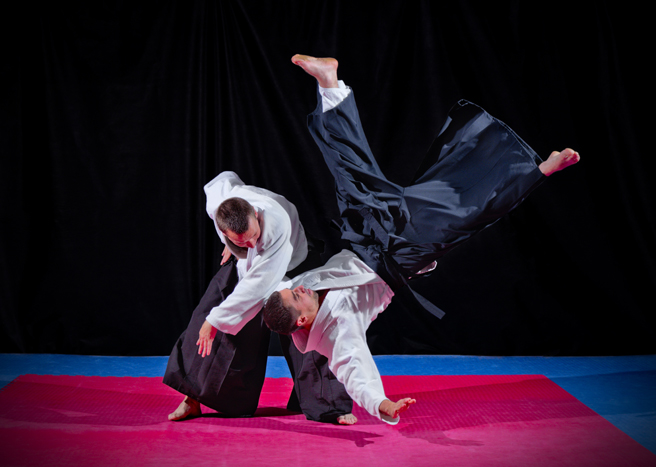
Techniques in Aikido span from simple throws and pins to complex weapon training and defense against several attackers. The progression of these techniques, from basic to advanced, is designed to prepare practitioners for different situations and enhance their adaptability and skill. In this way, Aikido is unlike Karate, as it does not have many attacking elements but instead focuses on defending. Lets take a look at some of the unique techniques in Aikido.
Fundamental Techniques
Fundamental techniques mainly consist of throws and joint locks. These form the core of Aikido and are commonly practiced during training sessions. Proficiency in these techniques depends on grasping the fundamental principles of Aikido, embracing its harmonious philosophy, and having good etiquette during training.
Among these essential throwing techniques are:
Irimi-nage: involves blending with your partner, entering their blind spot, and executing a throw by controlling their entire body.
Kaiten-nage: involves a spinning motion and redirecting your partner’s energy to execute a throw.
Shiho-nage: involves controlling your partner’s wrist and elbow to execute a throw in four different directions.
Mastering these basic techniques forms the foundation of practicing Aikido.
Advanced Applications and Randori
Advanced Aikido training involves Randori, a type of sparring that is also common in Judo. In Aikido Randori is intended to be a freestyle practice involving multiple attackers. This practice helps practitioners instinctively execute techniques in an unstructured setting. Although Randori is made to look easy, seamlessness is only achieved through repeated training.
In some Aikido styles, such as Shodokan Aikido, randori involves:
Two individuals engage in attacks, defenses, and counters at their discretion.
The strategic selection of techniques in Randori dictates the student’s ability to reposition themselves in relation to multiple attackers. This enables the efficient management of assailants.
Weapons Training in Aikido
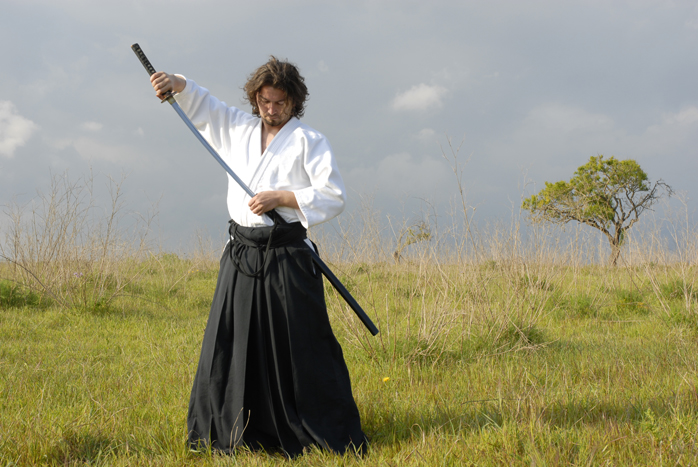
Training in weapons constitutes an essential component of Aikido. The traditional weapons utilized include the short staff, wooden sword, and knife. Practicing with these weapons provides students with an understanding of the source techniques and movements in Aikido. Weapons training in Aikido also helps practitioners with distance, timing, and footwork while being mindful of their practice partner in training.
For instance, sword (Bokken) training encompasses:
swinging the sword
practicing Irimi and attaching to Uke’s center
emphasizing footwork, distance, timing, centered movement, relaxed power, and correct posture.
Knife (Tanto) training in Aikido helps improve hand-eye coordination by necessitating practitioners to concentrate on the knife’s movements and precisely react to its path. Weapons training is practiced differently in each dojo, although a good dojo will practice safety when teaching students how to use weapons.
The Global Impact of Aikido: Spreading Peace and Harmony
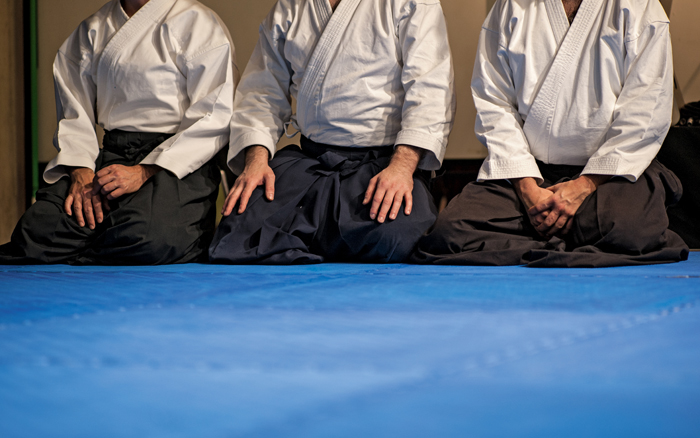
Aikido’s influence extends far beyond its birthplace in Japan, with the martial art now established in 140 countries. This global presence is partly due to the efforts of organizations like the International Aikido Federation, which plays a significant role in unifying Aikido practitioners worldwide.
Aikido in Popular Culture
Aikido’s global reach has been bolstered by its representation in popular culture. Aikido has been showcased in a number of films and television series, including ‘Gekitotsu! Aikidô’ (1975) featuring Sonny Chiba, ‘Above the Law’ starring Steven Seagal, and the TV show ‘The Walking Dead’.
Moreover, Aikido has been depicted in literature and is practiced by characters in the Marvel and DC comic universes. Prominent figures in the entertainment industry and sports, including:
Steven Segal
Elvis Presley
Madonna
Jennifer Aniston
Patrick Swayze
Steve McQueen
Mel Gibson
Robert Downey Jr
Christian Bale
Joan Baez
Mike Marshall
Dick Cavett
These are some celebrities known to practice Aikido, which has furthered martial arts global recognition. While many celebrities have studied Aikido, the most renowned and accomplished is Steven Segal. Many of his movies show his knowledge of Aikido, and he has definitely contributed to gathering a global audience for the martial art.
The Growth of Aikido Schools and Styles
Alongside its global spread, Aikido has diversified into various schools and styles, each with a distinct approach to the martial art. Aikido schools worldwide emphasize harmony, non-aggression, and the integration of mind, body, and spirit.
The growth of these schools has impacted Aikido globally, introducing principles of harmony and unity and affecting numerous martial artists worldwide. The Aikikai Foundation and the International Aikido Federation are among the main Aikido governing organizations. Both organizations have played a significant role in the global promotion and governance of Aikido. These Aikido organizations contribute to the development and promotion of this martial art.
Embarking on Your Aikido Journey: Tips for Beginners

If Aikido’s unique blend of martial arts techniques and philosophy appeals to you, you may be considering beginning your own Aikido journey. Starting your Aikido journey involves finding the right dojo and committing to regular practice.
Choosing the Right Dojo
The first essential step to beginning your Aikido journey is finding the right dojo. It’s important to look at the credentials of the dojo’s owner or head Sensei, including their rank and reputation within the Aikido community. The instructors should possess substantial experience and ideally hold a minimum rank of second-dan black belt while being affiliated with Aikikai.
Some Aikido dojos offer introductory memberships, which enable newcomers to experience classes for a set period at a discounted rate. It’s a great way to start, as it allows beginners to:
Familiarize themselves with Aikido techniques.
Experience the training atmosphere of the dojo.
Determine if Aikido is a suitable martial art for them before fully committing.
Frequently Asked Questions
Are Hapkido and Aikido the same?
No, they are not the same. Hapkido is a Korean martial art, and Aikido is a Japanese martial art. They do have a few similar techniques, and the founders of Hapkido and Aikido both studied Daito-ryu Aiki Jujutsu. However, Hapkido and Aikido are quite different from each other.
What does Aikido do?
Aikido is a Japanese martial art that utilizes joint locks, throws, strikes, and pins to redirect the force of aggression and neutralize an attacker. Through circular movement and strategic positioning, it harmonizes with the encounter.
Is Aikido offensive or defensive?
Aikido is a defensive form of martial art designed to redirect an attacker’s force and control them with joint manipulation or throws. It does not incorporate any offensive techniques and was developed with the intention of being a humane method of self-defense rather than a method of fighting.
What does Aikido do to your body?
Aikido can help improve physical conditioning, balance, flexibility, coordination, and performance in competitive and recreational sports.
What makes Aikido different from other martial arts?
Aikido is distinct from other martial arts in its philosophy of harmony and non-violence. It emphasizes the redirection of an assailant’s energy rather than direct confrontation. This approach comes from Morihei Ueshiba’s philosophical teachings.
Summary
Overall, Aikido is a unique martial art that combines physical techniques with a philosophy rooted in peace and harmony. From its origins in Japan to its global spread to 140 countries and its representation in popular culture, Aikido continues to impact martial arts around the world. Whether you’re a beginner looking to start your Aikido journey or a seasoned martial artist seeking a new discipline to master, Aikido offers a unique and enriching experience that transcends the dojo and permeates daily life with a sense of harmony.
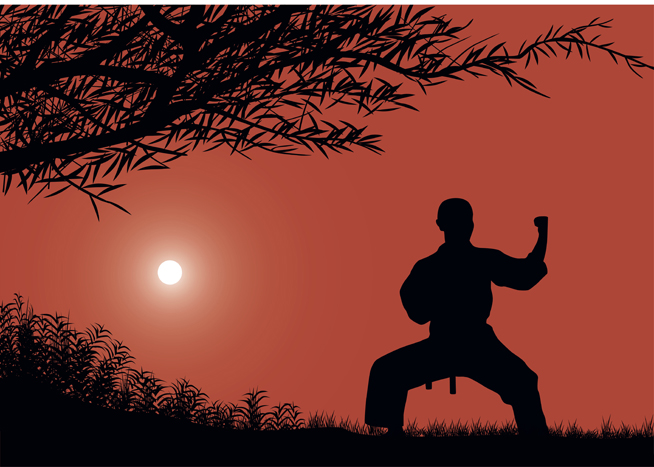
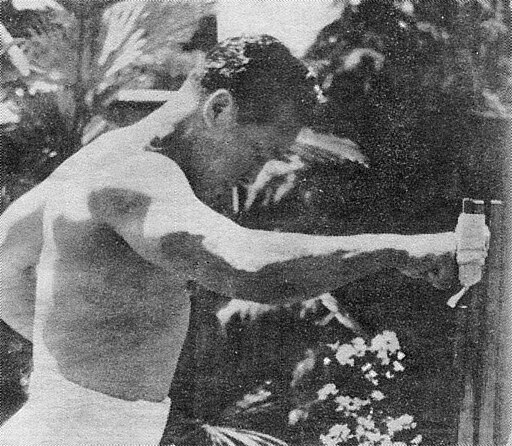
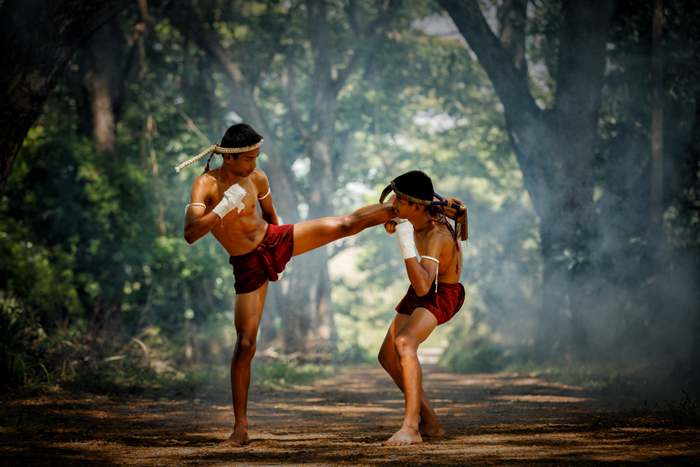
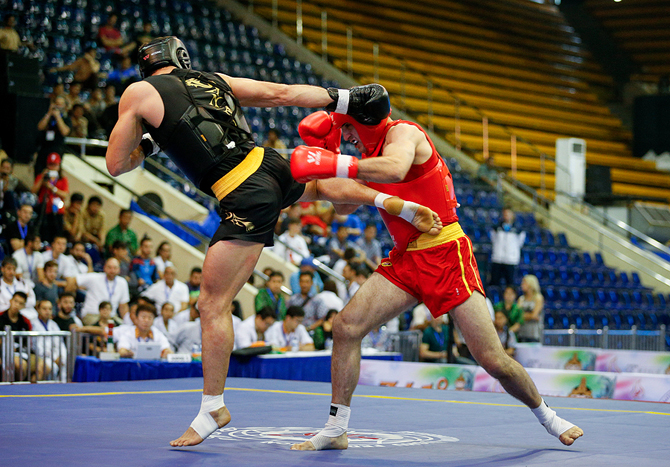
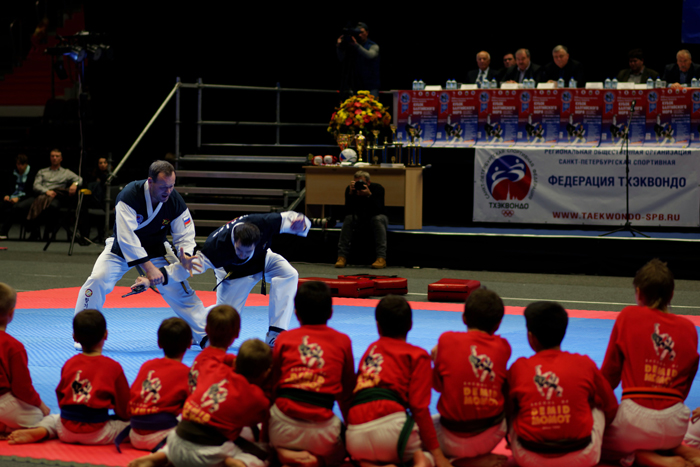
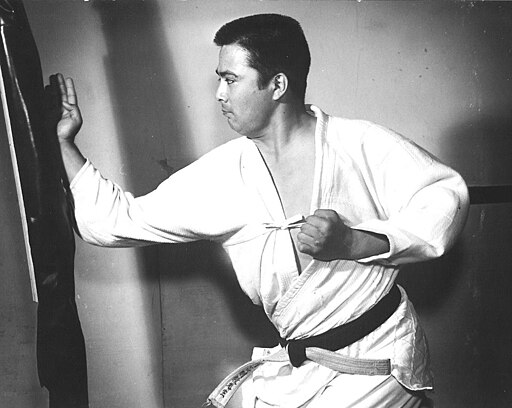

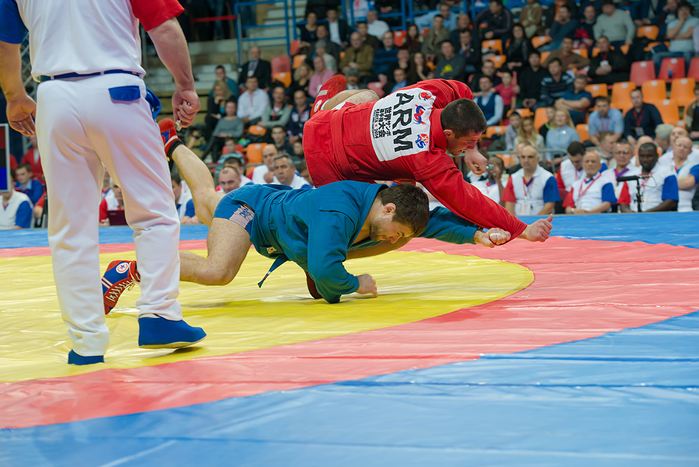
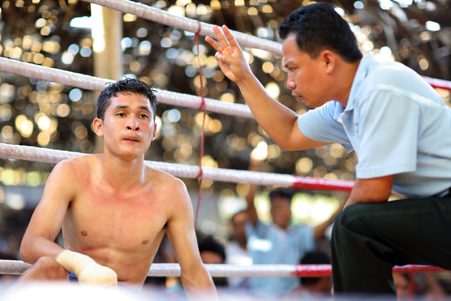
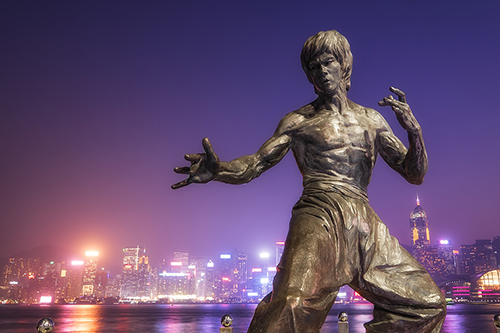
Pingback: Judo: The Real Power of the Gentle Way